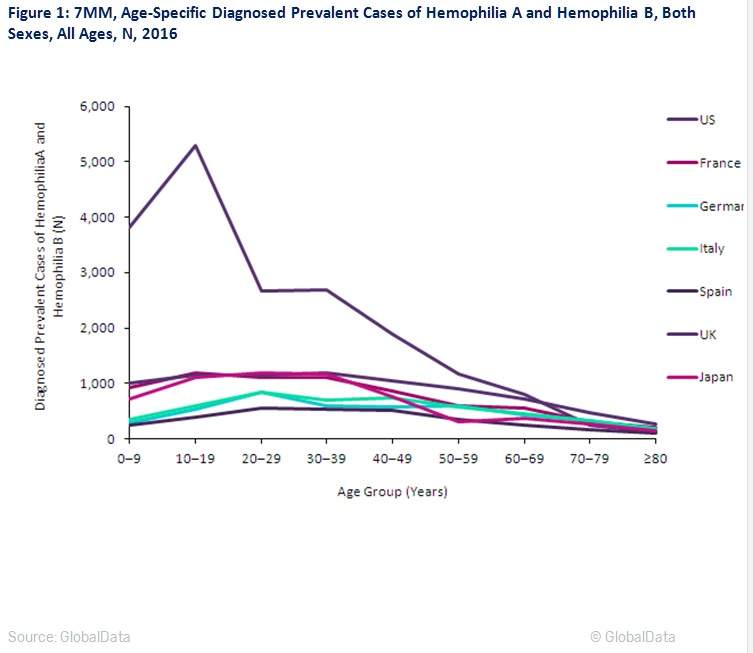

Heamophilia patients often have bleeding in joints, muscles, soft tissues, and within mucous membranes, which can be either spontaneous or due to internal or external trauma.
According to the World Federation of Hemophilia (WFH), approximately one in 10,000 people are born with heamophilia A and approximately one in 50,000 people are born with heamophilia B. In the seven major markets (7MM) of the US, France, Germany, Italy, Spain, the UK, and Japan in 2016, the majority of diagnosed prevalent cases of heamophilia A occurred in men (97.19%), with 40,323 cases.
In the US, the number of cases in men was much higher than in other markets, with 13,838 diagnosed prevalent cases, while women accounted for 402 cases. Spain had the lowest number of cases in men, with 2,589 cases, and women, with 75 cases.
The prevalence of heamophilia A and heamophilia B decreases with age consistently throughout the 7MM.
According to GlobalData epidemiologists, in 2016, children aged 10-19 years composed the highest proportion (19.91%) of diagnosed prevalent cases of heamophilia A and heamophilia B, followed by adults aged 20–29 years (16.14%). Adults ages 80 years and older accounted for the fewest diagnosed prevalent cases of heamophilia A and heamophilia B (2.31%) in the 7MM. The decrease in prevalence in the older population is probably related to the poor long-term survival rate in hemophiliacs. Figure 1 presents the age-specific cases of heamophilia in the 7MM in 2016.
How well do you really know your competitors?
Access the most comprehensive Company Profiles on the market, powered by GlobalData. Save hours of research. Gain competitive edge.

Thank you!
Your download email will arrive shortly
Not ready to buy yet? Download a free sample
We are confident about the unique quality of our Company Profiles. However, we want you to make the most beneficial decision for your business, so we offer a free sample that you can download by submitting the below form
By GlobalDataLife expectancy in recent years has improved for people with heamophilia due to improvements in medical management. Heamophiliacs may need regular blood transfusions throughout their lives. As they live longer, the risks of transfusion-transmitted infections such as hepatitis and HIV increases.
The introduction of universal guidelines for the screening and handling of blood and blood products has greatly reduced the number of heamophiliacs infected with transfusion-transmitted infections. As life expectancy for heamophiliacs is increasing in all countries, both HIV and hepatitis are expected to affect this population, as both diseases are expected to be common in the heamophiliac population in all markets.







